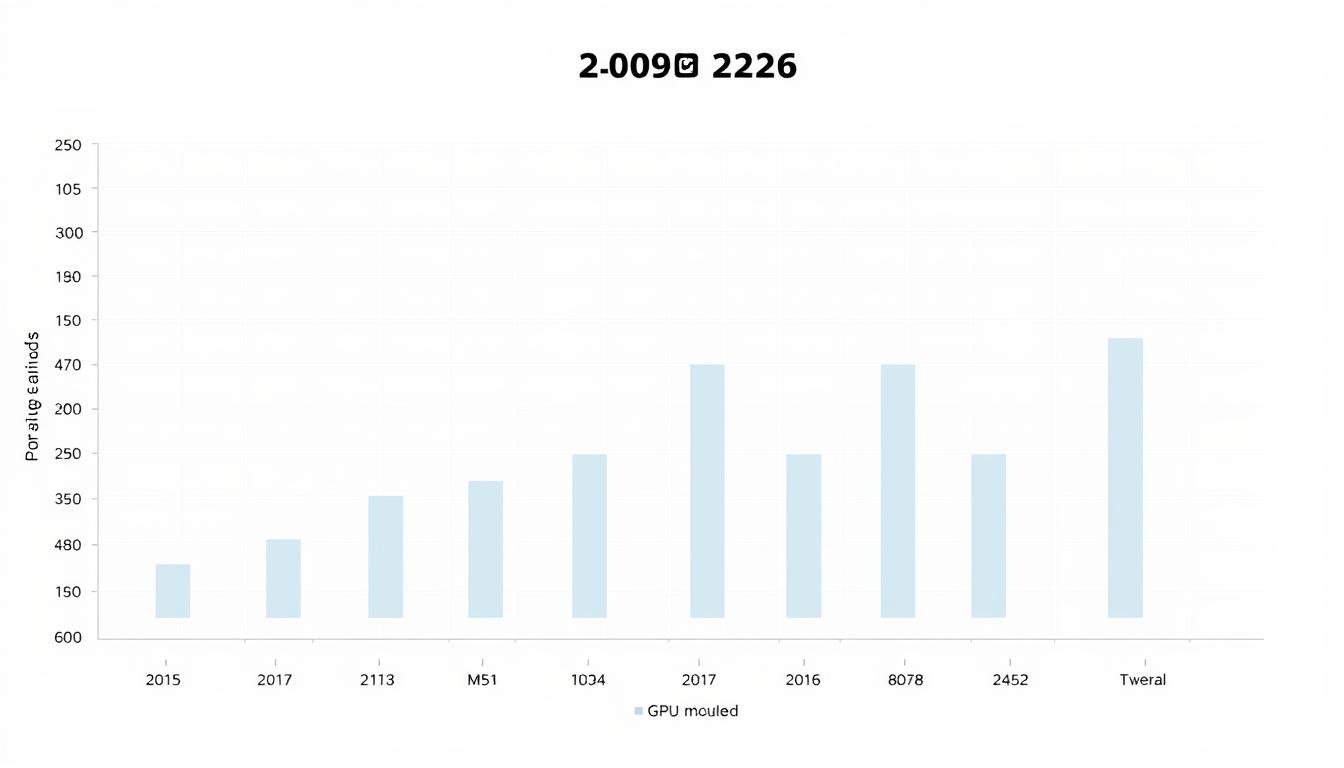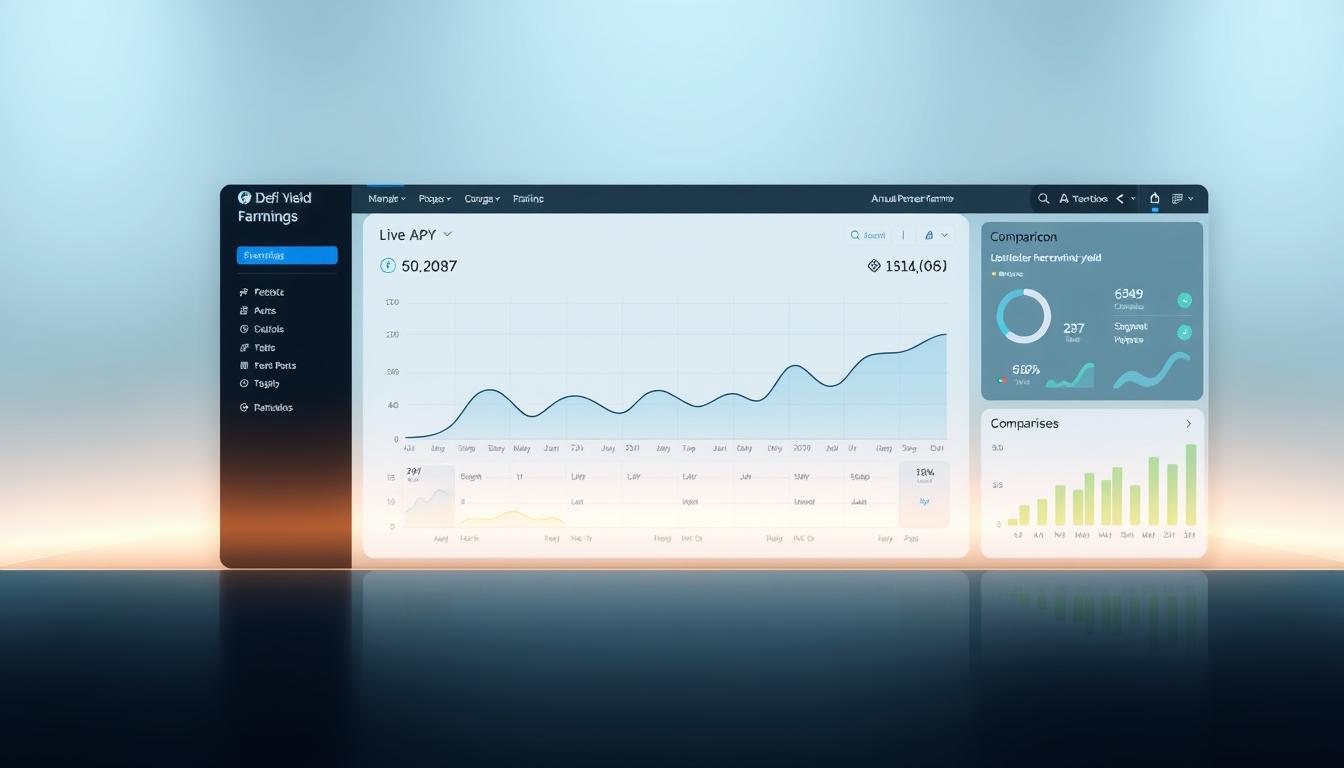Now Reading: Wallet Security Audit Checklist: Interactive Step by Step Guide
- 01
Wallet Security Audit Checklist: Interactive Step by Step Guide
Wallet Security Audit Checklist: Interactive Step by Step Guide

The digital currency landscape is expanding at an incredible rate. By 2024, over 562 million people globally own cryptocurrency. This growth creates new opportunities and risks.
Recent developments, like the approval of Bitcoin ETFs, have opened the door for more investors. This influx makes protecting your holdings more critical than ever. A systematic review of your storage methods is no longer optional.
This guide provides a clear path forward. We will walk you through the complete process for different storage types. You will learn to evaluate mobile, desktop, extension, and web-based solutions effectively.
Our approach builds from initial planning to final reporting. This ensures you develop a complete understanding. The goal is to protect your digital assets and maintain trust in the blockchain ecosystem.
Key Takeaways
- The global adoption of crypto has surged, increasing the need for protective measures.
- New financial products have made digital assets accessible to a wider range of investors.
- Proactive evaluation helps prevent significant financial losses from malicious attacks.
- A structured process covers various storage architectures comprehensively.
- This process safeguards individual funds and ensures organizational compliance.
- Building a routine check is essential for long-term safety in a dynamic environment.
Introduction to Wallet Security Audits
With millions entering the crypto space, protecting digital holdings is now a fundamental practice. The number of global owners jumped from 420 million to 562 million in just one year. This massive growth attracts malicious actors looking for weaknesses.
Importance of Securing Digital Assets
Approvals like Bitcoin ETFs in early 2024 brought institutional money into the market. This legitimacy increases the value and appeal of crypto investments. It also makes them a bigger target for attacks.
Hackers have caused enormous financial losses by exploiting system flaws. A proactive approach is no longer just recommended. It is essential for safeguarding your funds in this dynamic environment.
Audit Objectives and Scope
The main goal of a thorough evaluation is to find problems before they can be used against you. It also ensures you meet new rules and regulations. This process builds a foundation of user confidence.
Different types of storage solutions need unique assessment approaches. A one-size-fits-all method does not work effectively. The scope must match the specific architecture and potential threats.
| Objective | Key Action | Outcome |
|---|---|---|
| Identify Weaknesses | Systematic code and configuration review | Prevention of potential exploits |
| Ensure Compliance | Alignment with regulatory frameworks | Legal and operational safety |
| Protect User Funds | Comprehensive security assessment | Long-term asset protection and trust |
This structured evaluation protects individual assets. It also builds organizational credibility in a competitive marketplace. Establishing strong practices secures both value and reputation.
Understanding Digital Asset Risks and Compliance
As cryptocurrency adoption accelerates, investors face a dual challenge: evolving compliance requirements and persistent technical threats. Different storage solutions present unique vulnerability profiles that demand specialized assessment approaches.
Regulatory Considerations in the United States
The United States maintains evolving frameworks for digital currency businesses. Providers must implement robust compliance measures including KYC and AML protocols.
Regulatory uncertainty creates additional challenges for proper evaluation. Standards continue to develop at both federal and state levels. This dynamic environment requires ongoing attention to legal obligations.

Common Vulnerabilities in Crypto Wallets
Mobile solutions face risks like intent exploitation and insecure webview configurations. Cleartext communication can expose sensitive user data to interception.
Desktop applications, particularly Electron-based ones, may have outdated framework versions. These can allow remote code execution through misconfigured settings.
Extension-based storage faces cross-site scripting and clickjacking attacks. Web-based platforms are susceptible to injection attacks and sophisticated phishing schemes.
Understanding these specific patterns enables targeted testing approaches. Each architecture requires customized assessment methods for comprehensive protection.
Overview of a Wallet Security Audit
A comprehensive evaluation of digital asset storage requires a specialized approach distinct from conventional financial reviews. This process combines established accounting principles with deep technical analysis of blockchain technology.

The primary goal is multifaceted. It ensures transaction accuracy, verifies asset ownership through cryptographic proofs, and assesses technical controls. This examination also confirms compliance with relevant regulatory frameworks.
Definition and Purpose
This type of evaluation is a thorough examination of transactions recorded on a distributed ledger. It utilizes the immutable and transparent nature of blockchain technology.
The purpose is to validate data integrity and ensure financial records are free from material misstatements. It provides confidence in the accuracy and validity of all on-chain activity.
Differences Between Traditional and Blockchain Audits
Traditional financial audits review centralized company statements for discrepancies. They verify records to ensure a fair representation of a firm’s financial situation.
In contrast, blockchain evaluations leverage the decentralized, immutable nature of the ledger. They employ cryptographic verification and specialized analytical tools.
| Aspect | Traditional Financial Audit | Blockchain Wallet Audit |
|---|---|---|
| Data Source | Centralized company records & statements | Decentralized, immutable blockchain ledger |
| Verification Method | Record correlation & discrepancy checking | Cryptographic proofs & on-chain analysis |
| Identity Focus | Personal information & legal entities | Pseudonymous wallet addresses |
| Record Alteration | Adjusting entries is possible | Transactions are permanent and irreversible |
This hybrid process demands a unique skill set. Effective auditors need accounting knowledge, technical understanding of protocols, and cybersecurity expertise.
Preparing for Your Audit: Essential Steps
Effective preparation forms the foundation of any successful digital asset examination. This phase sets the stage for accurate findings and efficient workflow. Proper groundwork ensures your assessment proceeds smoothly from start to finish.

Initial Assessment and Planning
The initial phase requires defining your evaluation scope clearly. Establish which specific storage solutions and time periods need review. For example, you might examine activity from March 1 to May 30, 2024.
Document all addresses involved in your assessment. Understand relationships between different storage types within the organizational structure. This comprehensive mapping prevents overlooked areas.
Data Collection and Verification Techniques
Gaining appropriate access to records is crucial for thorough analysis. Use blockchain explorers and specialized APIs to gather complete transaction histories. This systematic approach ensures no critical information is missed.
Verification methods confirm ownership and validate included addresses. Cryptographic signature checks provide undeniable proof of control. These techniques establish the integrity of your collected information.
| Approach | Primary Focus | Best For |
|---|---|---|
| Comprehensive | All wallet types and full transaction history | Initial organizational assessments |
| Targeted | Specific address groups or time periods | Focused compliance verification |
| Periodic | Regular intervals with consistent scope | Ongoing monitoring programs |
Each preparation strategy serves different organizational needs. The chosen method should align with your specific objectives and available resources.
wallet security audit checklist interactive step by step guide
A systematic approach to evaluating digital storage solutions involves five distinct phases that build upon each other. This methodology ensures thorough coverage of all critical areas.

Interactive Walkthrough of Key Audit Phases
The first phase focuses on gathering transaction records from blockchain networks. Specialized tools help retrieve complete histories and balance information.
Analysts then calculate expected balances based on transaction data. They compare these figures against recorded values to identify inconsistencies.
When differences appear, investigators trace fund movements through the blockchain. They validate signatures and analyze transaction patterns to resolve issues.
The assessment includes testing different storage types for specific vulnerabilities. Each platform requires customized evaluation procedures.
Final documentation captures the entire reconciliation process. Reports provide clear findings and actionable recommendations for improvement.
This structured process helps maintain accurate records and strong protective measures. Following these steps ensures comprehensive coverage of digital holdings.
Utilizing Blockchain and Crypto Tools for Auditing
Advanced analytical solutions now provide unprecedented access to blockchain transaction data. These platforms transform complex verification tasks into streamlined processes.
Blockchain Analysis Tools and Their Benefits
Bitquery serves as a comprehensive platform indexing over 40 different blockchain networks. This gives auditors unified access to diverse crypto ecosystems.
The benefits include systematic retrieval of complete transaction histories. Professionals can calculate balances programmatically and trace fund movements efficiently.
| Feature | Basic Tools | Advanced Platforms |
|---|---|---|
| Network Coverage | Single blockchain | 40+ networks |
| Data Retrieval | Manual exploration | API automation |
| Balance Calculation | Manual tallying | Programmatic aggregation |
| Pattern Detection | Basic review | Advanced analytics |
Specialized Reconciliation Techniques Using Bitquery APIs
Specific queries retrieve detailed transaction information for thorough examination. For example, deposit queries gather inflow data within defined periods.
Balance calculation queries aggregate all token movements automatically. This enables verification that calculated balances match expected values.
When discrepancies appear, token transfer detail queries provide granular insights. Auditors can drill into specific transactions to resolve differences effectively.
Reviewing Smart Contracts and Secure Coding Practices
The programmable nature of blockchain technology introduces unique security considerations through smart contracts. These self-executing agreements control digital asset movements on decentralized networks.
Automated contracts require meticulous examination to prevent financial losses. Their code governs how cryptocurrencies move between addresses.
Auditing Smart Contracts for Vulnerabilities
Professional auditors examine contract logic for potential exploits. Common issues include reentrancy attacks and access control failures.
Testing procedures analyze boundary conditions and permission settings. Automated tools combined with manual review provide comprehensive coverage.
Ensuring Code Integrity and Security
Verification confirms deployed bytecode matches published source code. This prevents hidden backdoors from compromising user assets.
Secure coding practices include proper arithmetic libraries and interaction patterns. These measures protect against common vulnerability types in crypto applications.
Mobile, Desktop, and Extension Wallet Auditing Strategies
Mobile, desktop, and browser-based cryptocurrency applications each present distinct security challenges requiring tailored assessment methods. These platforms operate in different environments with unique attack surfaces that demand specialized evaluation approaches.
Assessing Mobile Wallet Security Measures
Mobile applications require thorough examination of platform-specific vulnerabilities. Intent validation on Android and deeplink handling on iOS prevent unauthorized app interactions.
Webview configurations must disable JavaScript execution when displaying untrusted content. Encryption protects sensitive information during storage and transmission.
Platform guidelines enforcement ensures proper SSL/TLS validation and certificate pinning. Session management testing verifies secure authentication flows.
Evaluating Desktop and Browser Extension Wallet Configurations
Electron-based desktop applications need current framework versions to mitigate known risks. Configuration settings like nodeIntegration and enableRemoteModule should remain disabled.
Context isolation and sandbox mode activation prevent remote code execution vulnerabilities. IPC message handling requires proper validation to block malicious inputs.
Browser extensions demand minimal permissions following the principle of least privilege. Origin validation checks protect against cross-site scripting attacks.
Sensitive data storage requires encryption before using extension APIs. These measures ensure comprehensive protection across different platform architectures.
Investigating Discrepancies and Ensuring Data Accuracy
The discovery of mismatched balances triggers a critical phase in the evaluation of digital asset management. This process requires careful attention to detail and systematic approaches.
Tracing the Flow of Transactions
When differences appear between recorded and calculated values, auditors must trace fund movements through blockchain networks. A real-world example from Singapore’s High Court demonstrates this importance.
Bybit discovered eight anomalous transactions through thorough examination. This led to employee prosecution for unauthorized transfers. Modern tools provide more reliable methods than traditional spreadsheets.
Investigators follow funds across multiple addresses and exchanges. They verify cryptographic signatures and transaction confirmations. Pattern analysis helps identify unusual activity that may indicate errors or fraud.
Documenting Reconciliation Processes
Proper documentation creates an essential audit trail for regulatory review. Records must capture investigation steps, evidence gathered, and conclusions reached.
Corrective actions include updating transaction records and implementing preventive controls. This systematic approach to analyzing cryptocurrency projects ensures long-term data integrity.
Thorough documentation supports findings and facilitates future assessments. It provides transparency throughout the reconciliation process.
Implementing Ongoing Monitoring and Compliance Measures
Effective cryptocurrency management evolves from single assessments to perpetual security cycles. The rapid pace of regulatory changes demands constant attention to compliance requirements.
Organizations must establish frameworks that adapt to emerging threats. This approach ensures long-term protection of digital assets.
Continuous Security Assessments
Regular vulnerability scanning identifies new risks as they emerge. Real-time transaction monitoring detects unusual patterns immediately.
Scheduled reviews of protective configurations maintain strong defenses. These practices create a robust security system that evolves with the landscape.
Professional development through specialized courses enhances team capabilities. Staying current with standards like FASB ASU 2023-08 ensures accurate accounting practices.
Adapting to Emerging Audit Technologies
AI-powered tools now detect anomalies with unprecedented accuracy. Machine learning models predict potential issues before they manifest.
Automated analysis systems streamline complex verification processes. These technological developments transform how organizations approach compliance.
Building adaptive programs requires investment in the right tools. This forward-thinking approach prevents problems over time. A solid foundation begins with proper crypto storage setup and expands into comprehensive monitoring.
Conclusion
The digital finance landscape continues its rapid transformation through blockchain technology. Protecting digital assets requires consistent attention to detail and comprehensive evaluation methods. This approach builds essential trust in the entire ecosystem.
Effective protection combines traditional finance knowledge with deep technical understanding. Different storage solutions demand specialized assessment approaches. Each platform presents unique challenges that require tailored testing.
Proper preparation sets the foundation for successful evaluations. Systematic data collection using advanced tools ensures accuracy. Thorough documentation supports both compliance and continuous improvement.
View these practices as a strategic investment rather than a burden. They protect user assets while building organizational credibility. This commitment ultimately supports sustainable growth in the competitive marketplace.
The crypto space will continue evolving with new technologies and regulations. Ongoing education and adaptation remain essential for long-term success. Implementing structured evaluation methods provides lasting value for any company handling digital tokens.
FAQ
What is the primary goal of a digital asset security audit?
The main objective is to systematically identify and evaluate potential risks and vulnerabilities within a system that holds tokens. This process helps protect the value of your holdings by ensuring the integrity of the technology and verifying proper access controls.
How does an audit for blockchain-based holdings differ from a traditional finance review?
Traditional reviews often focus on centralized financial records. In contrast, an audit for blockchain assets involves analyzing decentralized networks, verifying transaction histories on a public ledger, and scrutinizing smart contracts for code-level issues, which requires specialized tools and knowledge.
What are some common vulnerabilities found during these assessments?
Frequent issues include weak private key management, flaws in smart contract logic that could lead to lost funds, insecure user authentication methods, and misconfigured network settings that expose information. Auditors look for these weaknesses to prevent exploitation.
Why is continuous monitoring important after the initial assessment?
The technology and threat landscape evolve rapidly. Ongoing monitoring allows a company to adapt to new risks, ensure compliance with changing regulations, and maintain user trust by promptly addressing any emerging system issues.
What role do specialized tools like Bitquery play in the process?
These tools provide powerful blockchain analysis capabilities. They help auditors trace the flow of transactions with high accuracy, verify asset ownership, and reconcile data efficiently, which is crucial for a thorough and reliable evaluation.
Who typically performs these detailed examinations?
They are conducted by experienced professionals or firms with deep expertise in cryptography, decentralized finance, and secure software development practices. These auditors possess the skills to assess complex systems and provide actionable recommendations.













